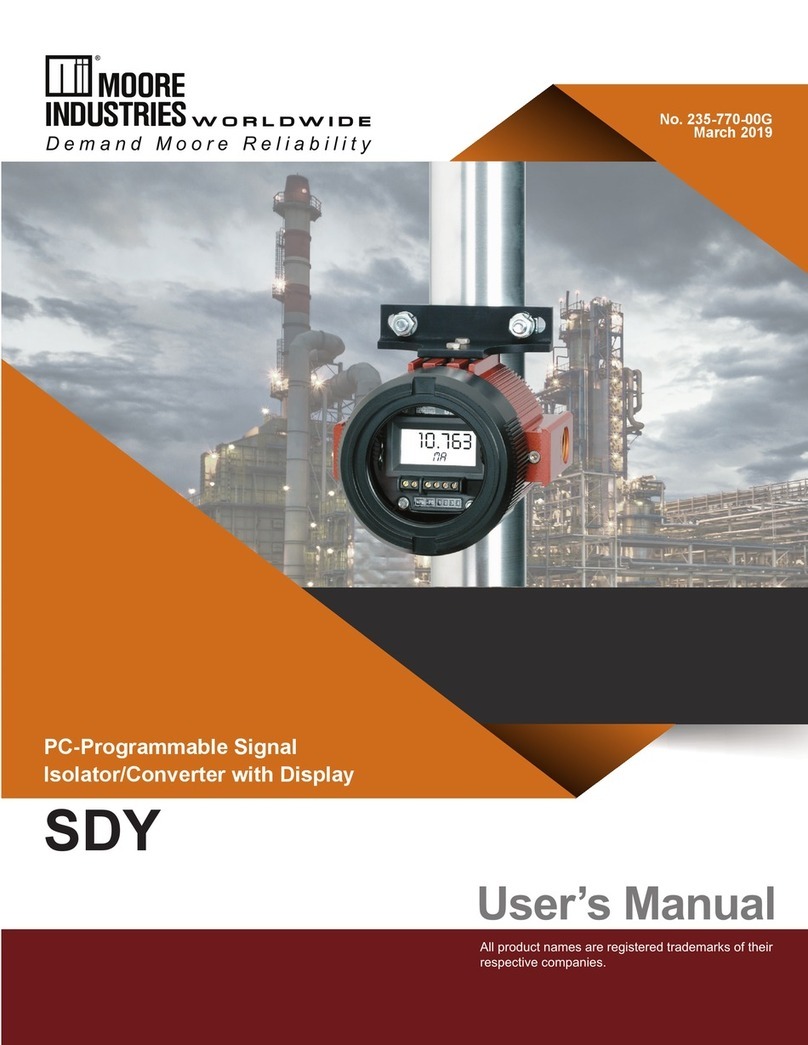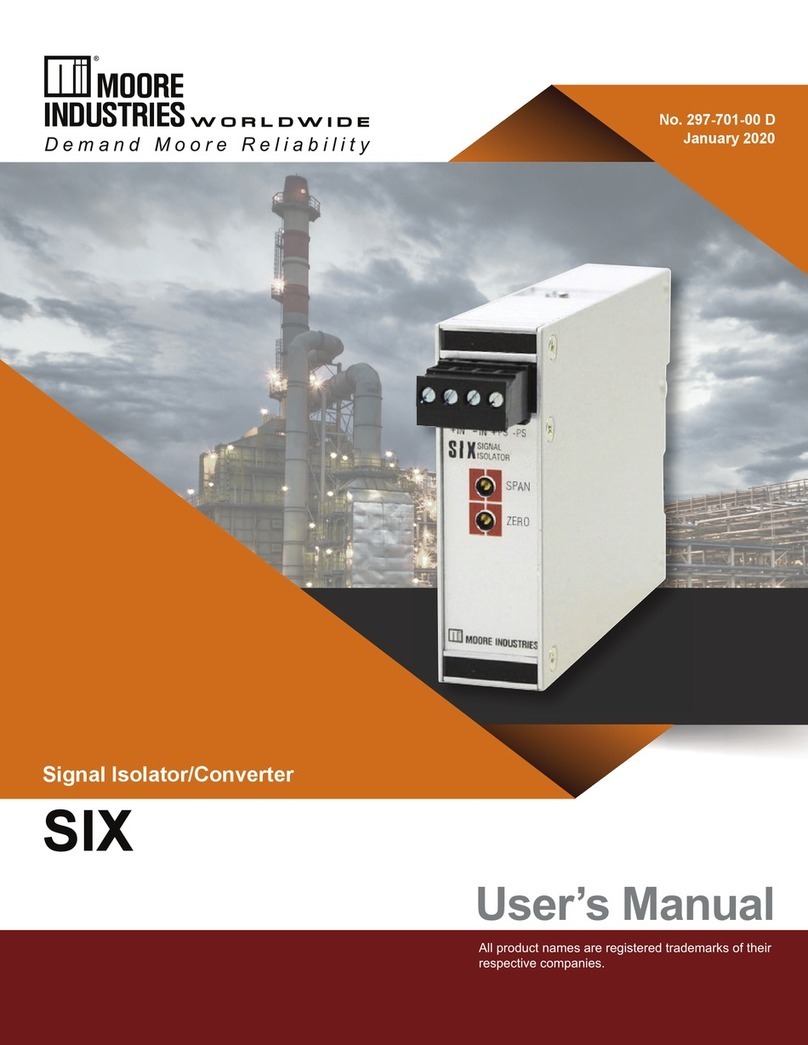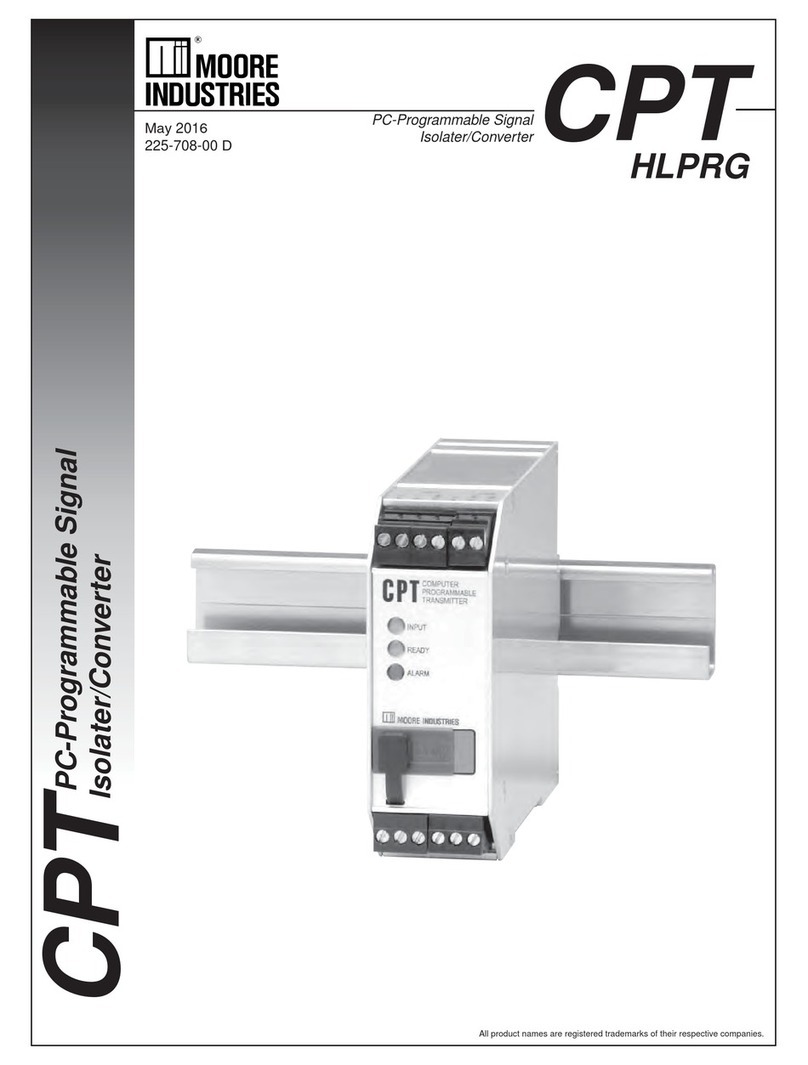
Page 4
SCX
Options
The SCX is available with the following options:
RF Option — RFI and EMI protection to 50 V/m –
abc -0.1% of full-scale when tested according to
SAMA standard PMC 33.1 (not available for ECD
Housings).
RTB Option — Removable terminal block for DIN-
style units only.
WTD Option — Water-tight enclosure for ECD
housed units meeting NEMA 4 and SAA Type N
(IP65) requirements.
For information on availability of other SCX options,
contact your local Moore Industries’ Sales Represen-
tative.
Serial/Model Number. Moore Industries uses a
serial number-based tracking system to maintain
historical records on each individual product that we
sell or service. The model number contains impor-
tant configuration information about the product to
which it corresponds. Together, the serial and model
numbers provide the factory, and the user, with
information regarding the unit’s history and functional
configuration.
If service information is required, you must provide
the factory with the unit’s serial number. Providing
the model number is also important when technical
assistance is required. The serial and model num-
bers for PC units is etched into a stainless steel tag
on the front of the unit. For DIN-style and ECD units,
these numbers are printed on a label and affixed to
the side of each unit.
The model number contains information about the
configuration of the unit as it was shipped from the
factory. The following model number example
identifies the significance of each field of the SCX
model number.
Introduction
Moore Industries’ Signal Current Isolator (SCX) is a
process instrument that accepts a process variable
current input and provides an isolated current output.
This manual contains descriptive, calibration, and
installation information for the SCX. Notes are
presented in this manual to help you avoid minor
inconveniences while calibrating or installing this
instrument.
Description
The SCX accepts a 4-20 or 10-50 milliampere (mA)
input and outputs a proportional, isolated process
variable signal of the same value. Units with 10-50
mA inputs can be factory-configured to output 4-20
mA (not with ECD Housings). Units configured with
4-20 mA inputs have 4-20 mA outputs only. The
input and output are factory configured to user
specifications.
Power requirements for the SCX vary depending on
the combined input/output configuration of the unit.
Table 1 listed the voltage drops (requirements)
considerations for the SCX.
The SCX has no visual indicators, but does have one
adjustment; the TRIM potentiometer (pot). The TRIM
pot is located on the front panel and is used to adjust
the output signal for a precise span value.
The SCX is available in three basic housing styles;
the hockey-puck (HP), DIN-style, and economy DIN-
style (ECD). Functionally they are identical. The
housing style you select should be based on the
application and the environment in which the unit is
to be used.
Table 1 contains the operational and performance
specifications of the SCX.































